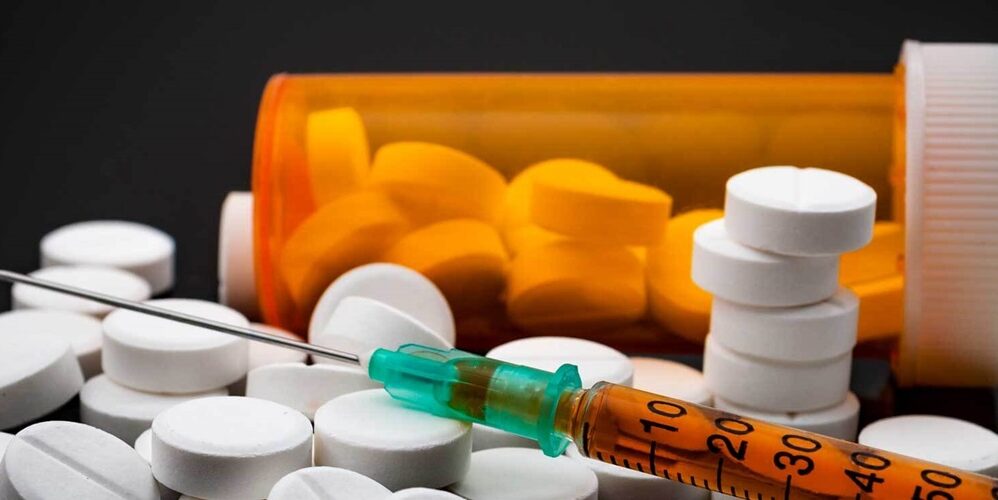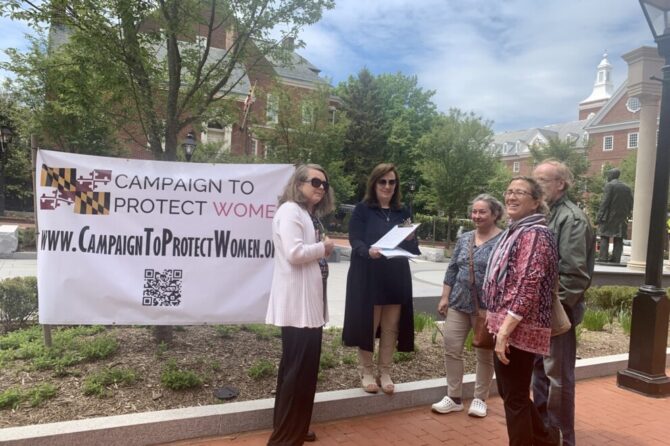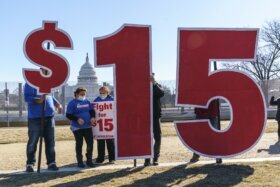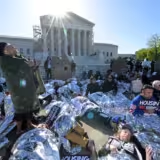WASHINGTON POST: The opioid crisis should command more of the mayor’s attention, advocates said, as a commission begins to decide how to use $80 million in settlement dollars.
People who have used opioids and their advocates sounded off on city officials in meetings this week for failing to slow the number of opioid overdose deaths rocking the nation’s capital, which far exceeds a homicide toll that has commanded public attention. They say the city’s approach to the opioid crisis has not evolved to reflect the rise of the synthetic opioid fentanyl, which is present in nearly all fatal overdoses in the District. They urged officials to escalate direct services, such as housing, for those in addiction. And they pressed D.C. Council members to consider asking Mayor Muriel E. Bowser to declare a public health emergency over the opioid and fentanyl crisis.Under pointed questioning Thursday from council member Christina Henderson (I-At Large), chair of the health committee, the head of the city’s lead opioid response agency declined to say that there was an emergency or even a crisis in the District, where 461 people, most of them older Black men, died of opioid overdoses last year.“The administration is certainly willing to have the conversation,” said Barbara J. Bazron, director of D.C.’s Department of Behavioral Health.In Virginia, the public health emergency declaration has been in effect since late 2016, which in part has made it easier for pharmacists to dispense naloxone. In Maryland, former governor Larry Hogan in 2017 signed an executive order calling for the state of emergency, helping jurisdictions coordinate anti-opioid strategies. The D.C. Council has not yet taken a vote, but advocates on Thursday and at a Wednesday gathering of the District’s Opioid Abatement Advisory Commission said the crisis should command more of Bowser’s attention as the commission begins to decide how to use $80 million in opioid settlement dollars.Council member Zachary Parker (D-Ward 5), whose district, is home to a disproportionate number of overdose deaths — alongside Wards 7 and 8 — said the city should escalate its response.“It is a little frustrating that this is now the fourth or fifth hearing we have had on opioids and we can’t even say we have a crisis that is impacting communities like mine,” he said.Through a spokeswoman, the mayor’s office referred questions to Ciana Creighton, the interim deputy mayor for health and human services. “We know that public health emergencies can sometimes mobilize action and resources. We are currently considering the practical value and discussing efficacy,” she said in a statement.Bazron on Thursday repeatedly pointed to the city’s strategic plan, called “Live. Long. DC.,” as a framework for how the city has addressed the opioid epidemic with the distribution of naloxone, fentanyl test strips and needle exchange programs. A stabilization and sobering center is scheduled to open Monday in Northeast D.C.The John Wilson Building holds the offices of the D.C. mayor and council. (Salwan Georges/The Washington Post)“We say everyone is collaborating,” Henderson said, “and yet I see no outcomes from said collaboration that is happening among our government. I have no doubt Live. Long. DC. sets a framework. The reason I’m setting it aside is it hasn’t been working. Our numbers are going up.”Annual opioid overdose deaths in D.C. more than doubled to 461 in a five-year period ending in 2022, coinciding with the rising prevalence of fentanyl. The fatality rate is on pace to exceed last year’s high, with 296 deaths through July of this year, according to the latest report from the chief medical examiner, with fentanyl present in 98 percent of deaths so far this year, city data show.Residents advocating for a public health emergency testified Thursday to the impact of opioids on their communities.Asiyah Timimi, director and founder of a life skills program in schools, R.O.C.K. Now, said she asks students who show up high how using drugs will help them further their goals, like finding jobs.“A lot of them have been the first responders to seeing their families, their friends, loved ones they grew up with since the cradle murdered in front of them. We have a lot of trauma in the streets; they are indulging because of that,” she said. “This is how they are pacifying their pain.”Timimi recounted getting a call in June 2021 to rush to the home of a friend whose teen daughter died of an overdose following two similar cases in their Congress Heights neighborhood.“Just one pill took her daughter away from her,” she said, noting that young people often don’t know the risks.Another resident, Elizabeth Stoll, recounted through tears how classmates of her son, who is in prekindergarten, found fentanyl containers on school grounds, and said crime near his school meant she and other parents were put into lockdown as they picked their children up.The urgency for solutions was palpable Wednesday within the 21-member group tasked with recommending how to use settlement money, $14 million of which is already sitting in District coffers.Looking around at the doctors and government officials discussing the need for evidence-informed strategies at the first meeting of the commission, certified peer-recovery specialist Demetrius Jones laid out his experience helping people on the streets.










